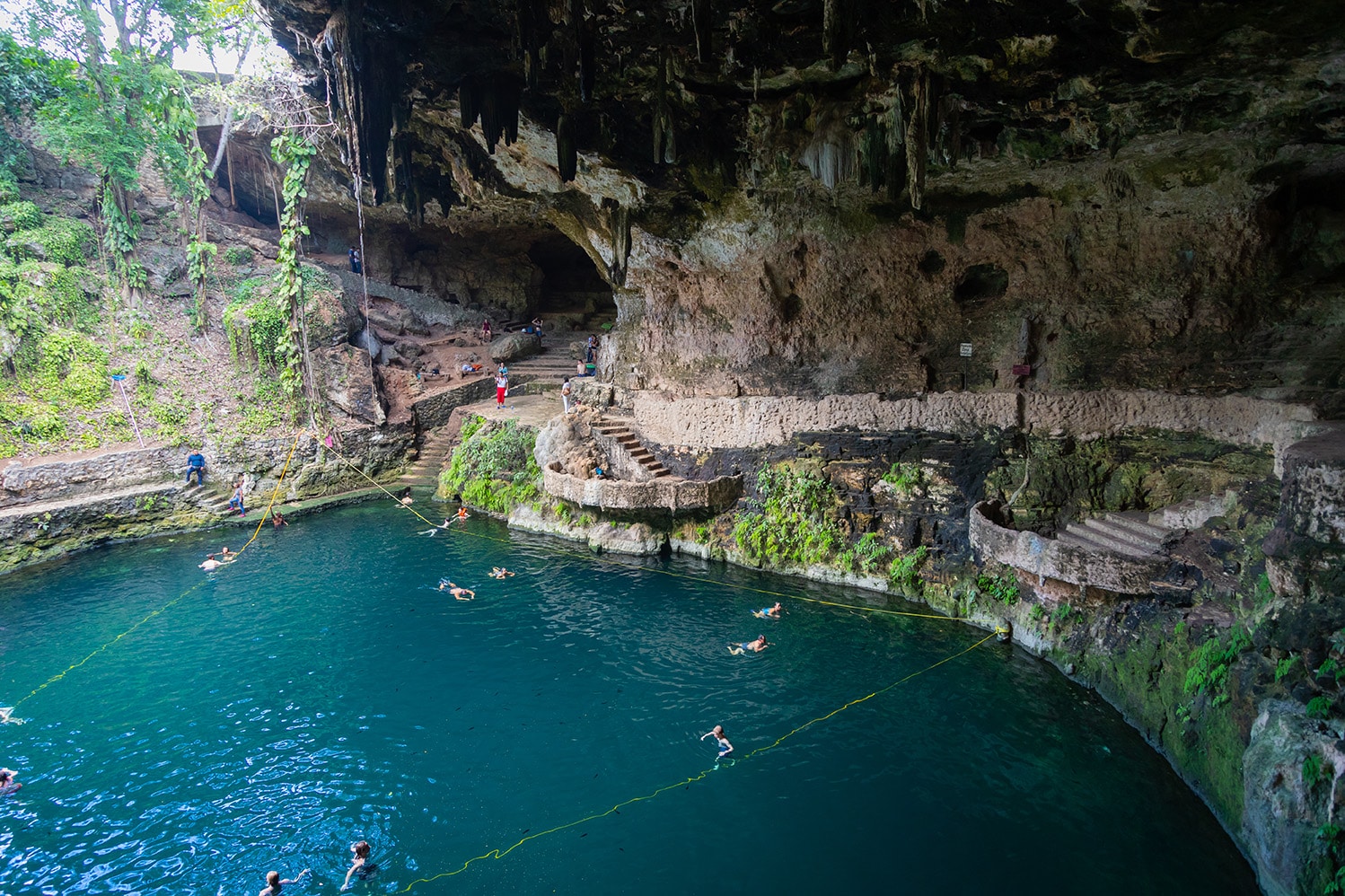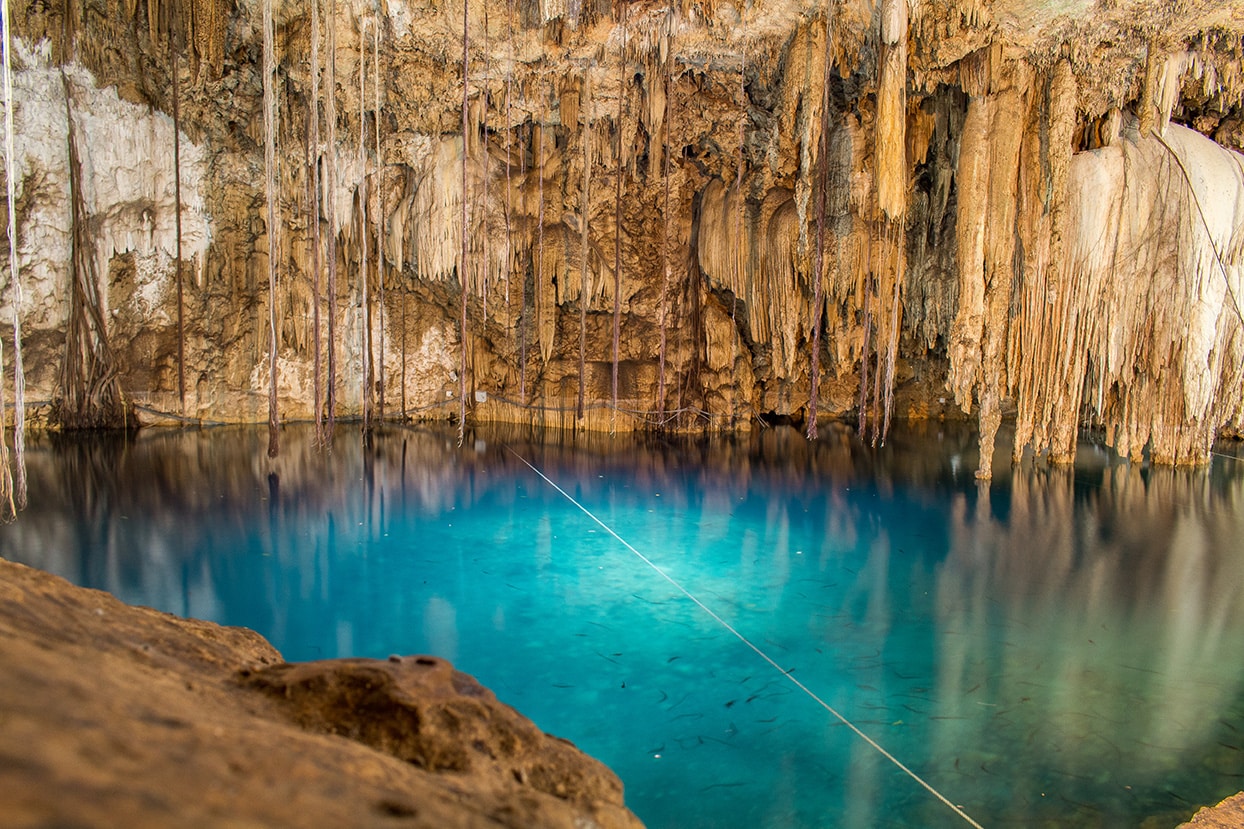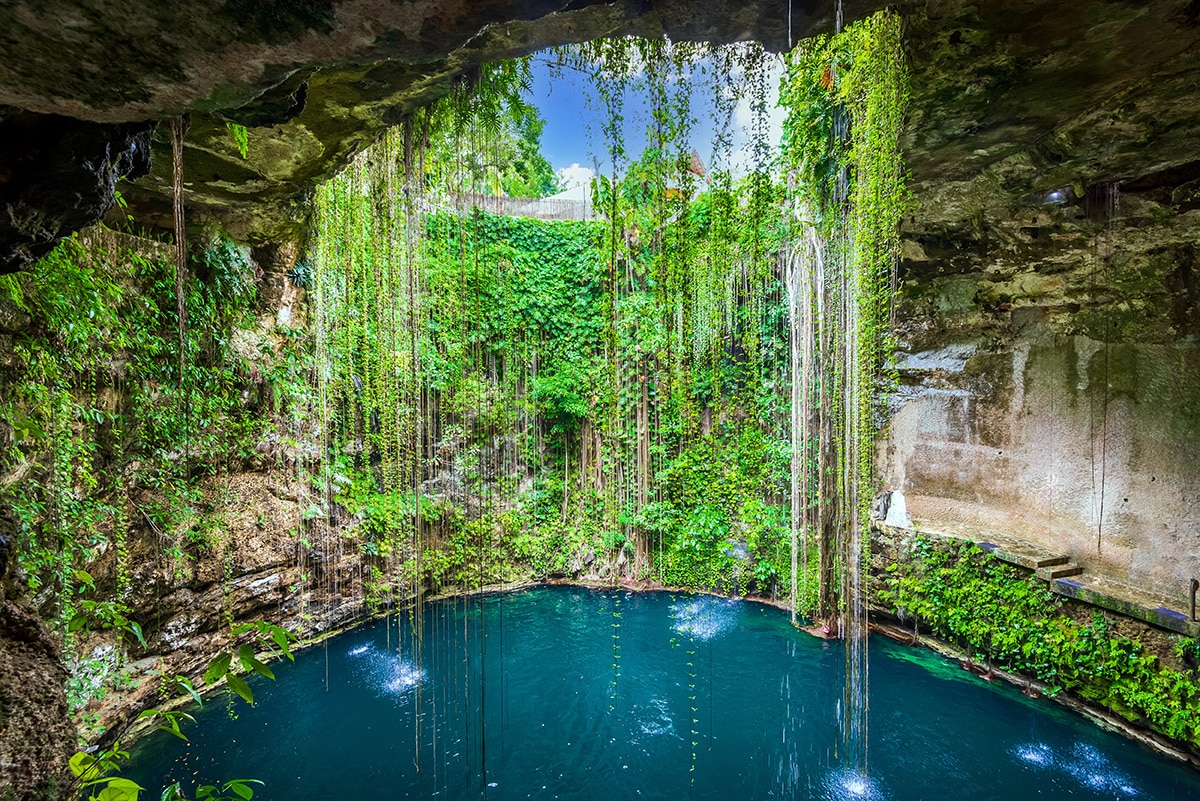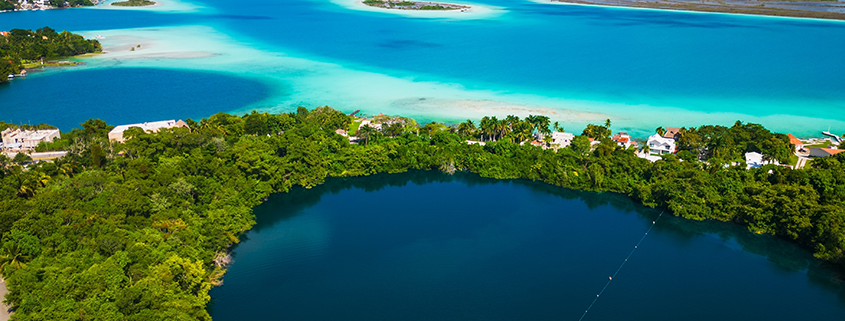Best Cenotes In The Riviera Maya
Cenotes can feel magical.
Webster’s Dictionary defines “cenote” as, “a deep sinkhole in limestone with a pool at the bottom that is found especially in Yucatán.”
Cenotes were a primary source of accessible freshwater in ancient Mexico, as the pools are groundwater springs revealed when limestone bedrock collapses. It’s not uncommon for them to be secluded in caves.
Freshwater fauna can thrive in cenotes. However, those in subterranean pools often evolve to be pale or translucent and blind.
Many cenotes still hold religious and cultural significance to contemporary ethnic Mayan people.
How Many Cenotes Are There In Mexico?
Conservationists aren’t sure of the exact number of cenotes in Mexico. Over 3000 cenotes are officially registered with the Secretaría de Desarrollo Sustentable (SDS) of Yucatan State, the office in charge of sustainable development.
Yet, ecologists estimate there are at least 6,000 cenotes, and potentially as many as 10,000, in the nation of Mexico.
Best Cenotes In Riviera Maya
Cenotes dot the Caribbean coast of the Yucatán Peninsula in Mexico. The following five stand out as the best of the best.
Cenote Saamal
Cenote Saamal is an open, freshwater pool in limestone in the heart of the Yucatán Peninsula. Located at Selva Maya, 97795 Valladolid, Yuc., Mexico, it’s about 40 kilometers from Chichén-Itzá, an iconic, ancient city preserved in an archeological site.
Cenote Saamal was once sacred to the ancient Maya, and a raised sacbe, or salt road, connects it to the pre-Columbian precinct. They believed it was a passage to the underworld.
Over the past several decades, archeological diving expeditions have recovered gold, artifacts, and even ancient human remains sacrificed in the pool, largely to the rain god Chaac.
Today, visitors can swim and snorkel in Cenote Saamal for a small fee. It’s one of the most popular cenotes among travelers. It’s set within Hacienda Selva Maya, a private nature preserve and garden encompassing the pool, nearby trails, zipline tours, and even a popular restaurant.
The cenote’s waters are crystal clear, so it’s easy to see the flora and fauna at the bottom. Schools of black catfish are frequently sighted, and crocodiles have been known to make an appearance.
Cenote Saamal has a staircase to let people descend into the pool slowly–though thrill-seekers can jump straight in from a platform.
Note that anyone entering the water must shower beforehand, to prevent any bug spray or lotion on the skin from damaging its delicate ecosystem.

Cenote Azul
Cenote Azul is located at Riviera Maya, Carr. Cancún – Tulum Km 266, 77734 Playa del Carmen, Q.R., Mexico. It’s easy to reach from the beach at Playa del Carmen. While not quite as popular as Cenote Saamal, it still draws plenty of visitors. For a small fee, people can enjoy Cenote Azul from 8:30 AM to 5:00 PM.
It’s one of the biggest cenotes in Mexico, 600 feet wide and 295 meters deep. There are shallow ends, which are safe enough for kids to wade in, while cliff jumpers and scuba divers can enjoy its depths.
The shallower side of Cenote Azul is known for its friendly garra rufa fish, which have been known to graze on dead skin cells. Certain spas actually charge for the privilege of soaking one’s feet in a pool with garra rufa, a practice called ichthyotherapy or “fish pedicure.”
The clear waters offer a beautiful view of the submarine flora and fauna.

Cenote Zaci
Cenote Zací is a freshwater pool formed in a partially collapsed cavern in Valladolid, less than a kilometer from the town’s central square. It’s 150 feet across, 260 feet deep, and semi-open. “Semi-open” means the cenote is partially within the cavern, yet also partially exposed directly to sunlight and the surface.
The predecessors of the Mayan chiefdom of the Cupules built a settlement surrounding the cenote thousands of years ago, likely in 1,800 BC. In the mid-16th century AD, civil war in the Mayan kingdom, and antagonism from Spanish conquistadors, led to the official creation of Valladolid. Centuries later, it was one of the sites of the Valladolid Rebellion.
Less than a kilometer from Valladolid’s central square, the Cenote Zací is the site of history and legend alike. The most popular tale is that of the immortal, star-crossed love between Maya noblewoman Zac-Nicte and Hul-Kin, a warrior from a rival house. The tragic tale ends with the pair finally finding love together in the afterlife, crossing over through the Cenote Zací together.
It isn’t as popular as some of the other cenotes on this list, which is good for anyone wishing to avoid crowds. It’s also the least expensive, and it’s open from 8:00 AM to 5:00 PM.
Visitors can descend into the cenote via stairs carved into the cavern’s natural stalactites. At times, guests can experience beautiful waterfalls. People visiting often praise the site as “peaceful,” and they mention freshwater turtles often come up from the water to sunbathe on its sunlit rim.
However, know that lifejackets are mandatory for swimming in Cenote Zací, and there is no diving or snorkeling allowed.

Cenote Xkeken
Cenote Xkeken, also called Cenote X’Keken or Cenote Dzitup, is a semi-open cenote in Valladolid. It’s open to visitors for a small fee from 9:00 AM to 6:00 PM, Monday-Saturday.
To reach the pool, visitors descend into a cavern via a narrow staircase, following the path until it opens to a majestic semi-subterranean space.
The cavern space is vault-like, the high ceiling and walls covered in dramatic limestone formations. Bats roost in the ceilings, and colonies of hundreds of Mexican Funnel-eared Bats live in the cave system. Shafts of sunlight burst through the ceiling’s natural gaps, creating an ethereal “spotlight” effect.
The freshwater pool itself is a bold turquoise. It’s smaller than some of the other cenotes, only 114 feet across and 65 feet deep. It’s connected to the nearby Cenote Samula by an underground river in the cave system. This lets marine fauna, like the pale catfish, migrate from one cenote to the next.
The water is 25°C (77°F) year-round, making it a relaxing spot to swim, float, or snorkel without getting too cold quickly. Just make sure to use the onsite showers to remove lotions and sprays from your skin before jumping it.

Ik Kil Cenote
Cenote Ik-Kil is outside of Pisté, in the Tinum municipality, on the popular highway to Valladolid.
It’s a fully open cenote, with no cavernous “ceiling.” Instead, sunlight reaches the whole pool through a hole, an opening in the limestone 85 feet above the water’s surface. The crater-like hole was created by the same limestone collapse that created the cenote itself, millions of years ago.
The freshwater pool is 157 feet deep and 200 feet across.
Cenote Ik-Kil is available to visitors for a small fee, seven days per week, from 8:00 AM to 5:00 PM. It’s one of the few cenotes developed for visitors, and it features unique onsite amenities (including a restaurant and bar).
Likejackets and snorkeling equipment are available onsite, and it’s a popular spot for casual swimmers and cliff divers alike. It was even a featured location in the 2012 Cliff Diving World Series.
Non-competitive swimming visitors mention their surprise and delight at the friendliness of the schools of fish in Cenote Ik-Kil. They’ve been known to swim right up against people’s legs as they move through the water.

Explore The Cenotes of The Riviera Maya In Mexico With Caravan
At Caravan, every aspect of our tours is hand-picked by our experts to build an extraordinary adventure.
On our Mexico Ancient Civilizations Tours, experience nine days of the best of Mexico – ancient ruins, and luxury you won’t find anywhere else – all at one affordable price.
Call us at 1-800-312-321-9800 to learn more. Or, call 1-800-CARAVAN (227-2826) to book your spot today.
